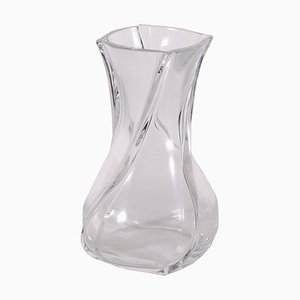
With a legacy of world-class crystal craftsmanship that spans more than 250 years, Baccarat remains among the leading glass manufacturers today, producing everything from tableware and decorative accessories to lighting and jewelry.
In 1764, King Louis XV granted permission to Prince Bishop Cardinal Louis-Joseph de Laval-Montmorency (1710-1802)—who petitioned on behalf of Antoine Renaut—to establish a glass factory in the French village of Baccarat. Verrerie Renaut et Cie, as the factory was then known, aimed to produce glass that could rival the famous products of Bohemia. Notably, it was the first non-nobleman operated glassworks in France.
During the early years, the glassworks mainly produced flat glass for window panes and mirrors, as well as stemware. While the company survived two wars, the French Revolution in 1789, and the Napoleonic Wars from 1812 to 1815, it was bought by a Belgian manufacturer of lead crystal in 1817 and the name was changed to Voneche-Baccarat. In 1822, the glassworks was sold once more and eventually became known as Compagnie des Cristalleries de Baccarat (keeping Voneche as part of the name until 1843). One year later, in 1823, the company received its first royal commission. This would eventually lead to a long succession of royal commissions—from the queen of Portugal to Czar Nicholas II and Czarina Alexandra Feodorovna of Russia—paving the way for the company to become the foremost glassworks in France.
In 1841, the Harcourt Service was first introduced. Inspired by a chalice that French King Louis-Philippe commissioned in 1840, the service is one of the company’s most iconic collections today. Shortly after the company began producing crystal glass paperweights in 1846, which have become favorites among collectors.
During the 1920s and 1930s, Baccarat modernized its look with pieces like the Paraison Collection, commissioned in 1933 for the Maharajah of Indore’s Manik Bagh Art Deco palace, and monogrammed glasses from the François Villon Collection, commissioned in 1936 by President Franklin D. Roosevelt.
Over the years, Baccarat has collected a number of awards and medals including a gold medal at an international exposition for glass in 1823 and a gold medal at the World’s Fair in Paris in 1855. Today, Baccarat boasts the highest number of award-winning "Best Craftsmen" in France. To put this into perspective, it takes a Baccarat master fifteen years to master the craft of sculpting crystal. The Baccarat catalog spans 2,500 products including crystal tableware, jewelry, lamps, vases, carafes, decorative pieces, and home fittings. In addition to luxury goods, Baccarat produces glass for mining lamps for the coal mining operations of Charbonnages de France. The company is also known for pioneering the incorporation of computer-aided design and manufacturing techniques into their production methods.
In 1964, the Louvre held a retrospective celebrating the company's 200th anniversary. In 2003, the company relocated to the former residence of artist Marie-Laure de Noailles on Place des Etats-Unis in Paris, giving designer Philippe Starck carte blanche to design the interior. The company currently owns two museums, one of which is in Baccarat and another in Paris in their showroom. To mark the company’s 250th anniversary in 2014, 500 pieces from Baccarat’s historic collection were exhibited at Baccarat: The Legend of Crystal in the Petit Palais at the Musée des Beaux-Arts in Paris.




